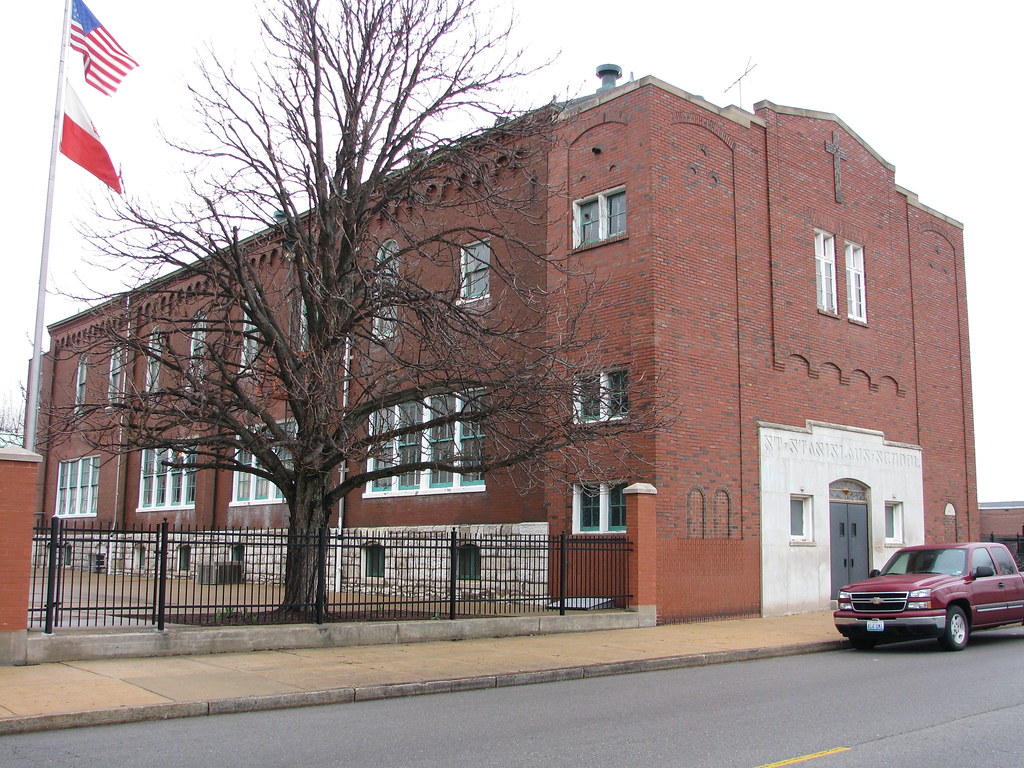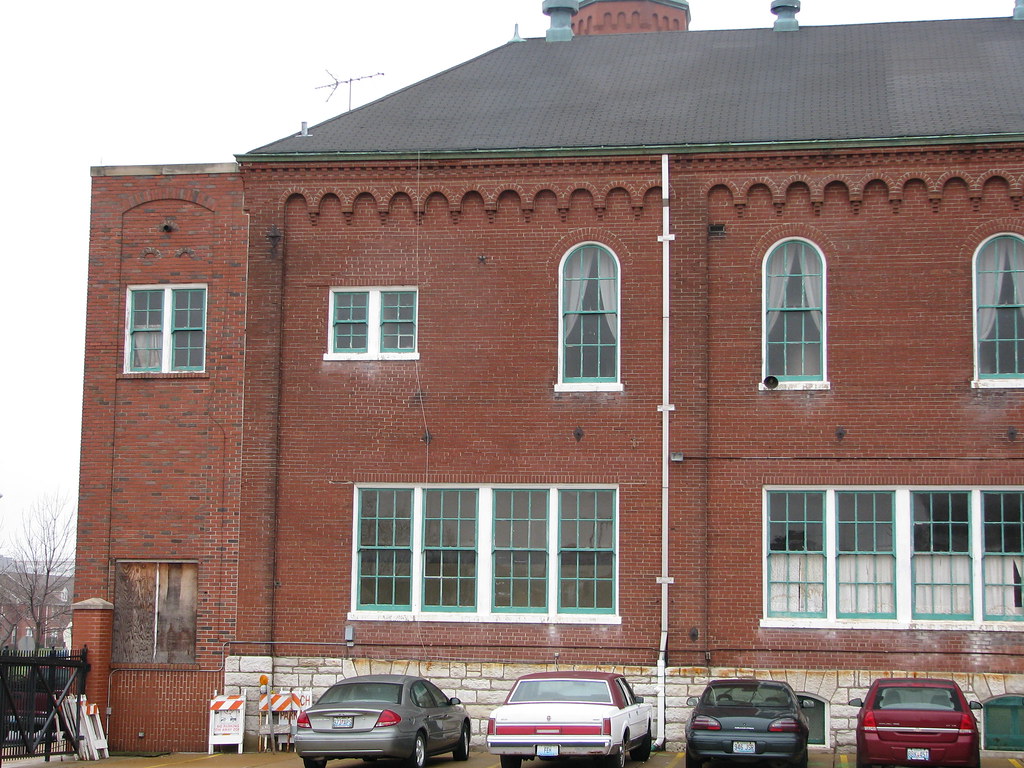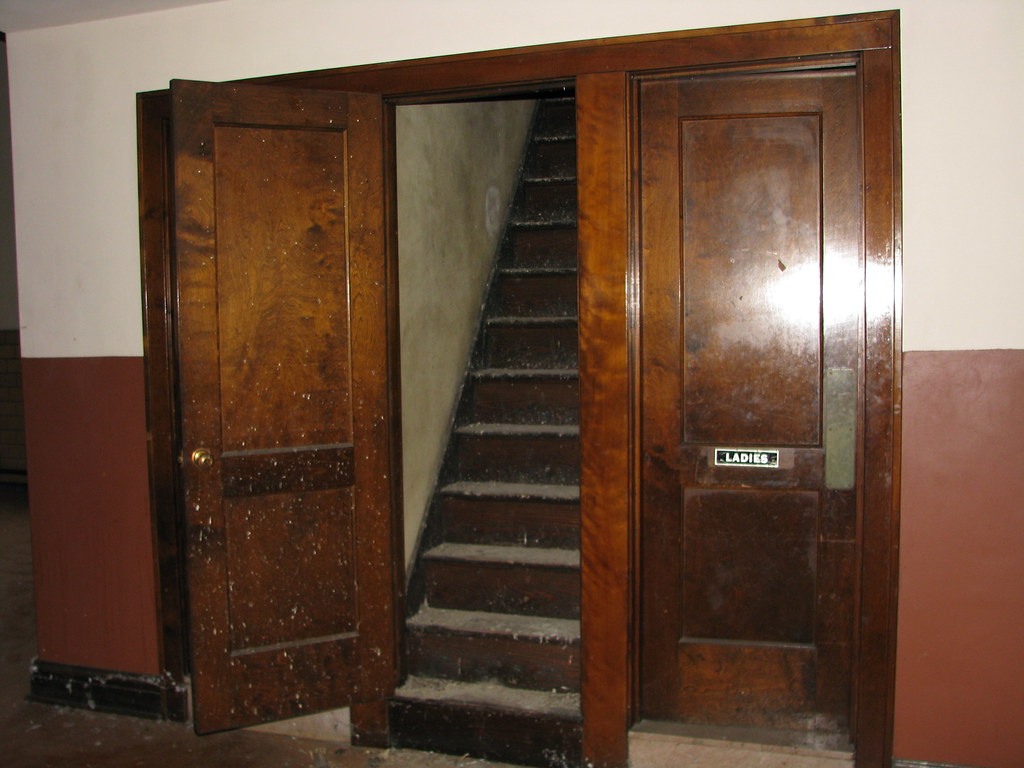
I suggest reading my previous post, St. Stanislaus Kostka: A Preface, before reading this one.
On March 18, the St. Stanislaus Kostka parish applied for a demolition permit for its historic school building adjacent to the church on North 20th Street. Since neither the City Landmark nor the National Register of Historic Places designations for the church include the school, the building falls outside of demolition review. The school is in the Fifth Ward, in which the Cultural Resources Office only has preservation review of official landmarks. Hence, the parish demolition application need only clear the Building Division before work can commence.
The sudden news shocked preservationists who had stood behind the church in its dispute with the St. Louis Archdiocese. How could a parish who had dared tell the archdiocese that it could better tend its buildings and people wish to demolish a historic building under its care?
Although the permit was a sudden development, the parish actually voted to demolish the school two years ago. And the vote was anything but unanimous, as some parishioners still have misgivings.
The trouble for the parish is that the school closed in 1964, and the parish has never found a use for the building. The first floor is still used occasionally, while the second floor is full of debris and pigeons. The parish has no plans to resume its school, and the building seems outmoded for the social functions that the parish still hosts regularly.
According to the board of the parish, repairs would cost $1 million. Board members say that schools have looked at the building, and declined interest. One wonders if the use of federal and state historic rehabilitation tax credits was explored. Since state credits recoup up to 25% of rehabilitation costs and federal credits 20%, together the programs could knock $1 million down to a more reasonable $550,000.
Of course, in order to claim the credits, ownership of the school would have to be transferred to a for-profit entity. Either a new owner or a parish-led development entity could rehab the building and get tax credits, should the building get listed on the National Register.
As the photographs show, the building is entirely sound. Sure, the building has extensive interior deterioration. There are holes in walls and ceilings, the systems are shot and the second floor needs extensive cleaning. However, the structure is sound, the roof is good and historic features like millwork and even original windows are in place. Most tax credit rehab projects start off in worse shape than this.
The school building actually dates to 1896; examine the side elevations and the blind arcade running along the roof line and one sees the congruity between the school, the rectory and the church, all built in the 1890s. The school received major alterations in 1923, when the first floor windows were expanded into wide, tall modern windows and in 1930, when the stairwells were added at each end. The front stairwell gives the building its distinctive and almost foreboding Art Deco Gothic entrance.
Although this is the last minute, one hopes that the publicity surrounding the demolition might lead to some reconsideration. The parish might look outside itself and consult with preservation professionals, city officials and developers to find creative solutions to the problem of the old school building -- which might look more like an opportunity to others.
Another troubling prospect is the future of the rectory that stands between the school and the church. Already down to one priest occupant, the building faces maintenance and utility issues similar to the school. How long before the parish starts thinking that it no longer needs its own rectory? Dialogue about the school would prevent a similar crisis in the near future.
The spirit that has kept St. Stanislaus Kostka alive (and on the front page of the St. Louis Post-Dispatch) is one big enough to allow for a better fate for the school building than demolition. Finding a new future for the school isn't a battle -- it's doing the right thing with resources the parish already owns.
(All photographs used here by Douglas Duckworth.)
More photographs on Flickr: Thomas Crone, Douglas Duckworth and Susan Sheppard.





5 comments:
With the view of Falstaff, I'm sure there's a market for condos. The class rooms are large, with equally sized windows. The ceilings are tall and most of the wood flooring are in good shape. The second floor would be great for a concert venue and there's room for a small bar. The basement could be used for laundry/storage or a community center/game room. The building really would work well for condos. The issue of parking is easily solved since there are many spots available. The lot is also fenced.
If the building was sold and listed on the Register, I'm rather confident people would buy. St. Stan's could have made a little money on the sale as well. I'm sure more than the cost of demolition.
Right now developers are struggling to sell condos on Washington Avenue.
Claiming to be sure of a market for condos, based on a view of Falstaff is supported by what market comparables in today's market?
Rather than buffing for condo development, why not simply maintain/mothball the building for better days in the future?
Why the rush for demolition? Seems like sort of a hostage romance...if we (the St. Stans parishioners) can't have her, no one can!
Also, while there is much sympathy for the plight of the average St. Stans parishioner, there is also supposedly some concerns relative to control over the old parishes finances.
Has an audit been done of church funds in the recent past? Covering how many fiscal years?
Obviously when the money market is tight there will be fewer developers willing as they'll have a tougher time securing financing.
I'm simply saying that the building is desirable for development. It has features which people would desire. If it was rehabbed I would certainly like to buy a unit.
The deterioration of the interior is by no means extensive, in fact I would call it isolated compared to most buildings I encounter that have been unused for that period of time. I would say the building is in excellent shape. Obviously it needs new systems, and I noticed some vinyl asbestos tile that would need qualified workers to remove, but the building is an excellent candidate for rehab. I wonder if there would be any interest in apartments for elderly members of the parish? Nearby the old Franklin School was just converted to for this use. The church could bring in a developer to do the rehab and deal with the tax credits and the church could retain ownership and control of the property while having some income from rent.
Has Landmarks by chance talked to the church about the idea of preserving the building through tax credits?
O a tax credit project, the church could not maintain ownership and benefit from rent.
Historic tax credits are established as a dollar for dollar reduction of state and federal income tax liability, however, to generate cash for a project, they are sold on the secondary market at a discount to a limited partner investor in the project.
However, rather than looking at the market or financial conditions facing a private redevelopment, the first issue is settling the church's own plan for the disposition of the property.
What do they want to do with the building? Are they open to rehab under a feasible scenario? Are they open to transferring ownership?
What options are they willing to put on the table?
Post a Comment